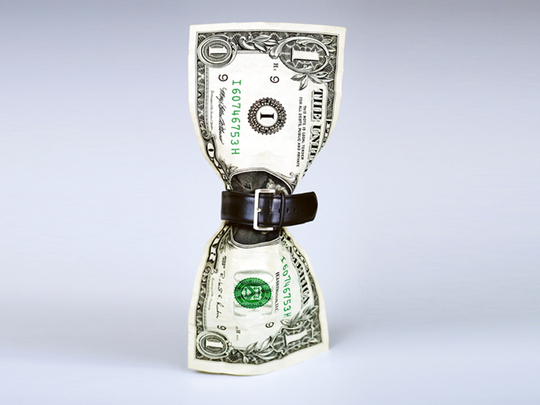
UAE banks are likely to consolidate existing business and become more prudent in lending in 2016 as deposits wither away amid a prolonged period of lower oil prices.
The drop in deposits will prompt more conservative lending, which means profit growth will be harder to come by this year, according to analysts. “I think 2016 will be a slower year where banks will focus more on conserving and maintaining their overall balance sheet while trying to avoid credit losses,” says Timucin Engin, Director, Financial Services Ratings at Standard & Poor’s in Dubai. “For 2016-17, the major focus of banks will be more on maintaining costs and keeping their asset quality intact rather than growing the business.”
After the global financial crisis led to a deterioration in bank performance in 2009 and 2010, liquidity began to flow back into the system in 2010 on the back of stronger oil prices. The credit cycle turned as early as 2012, and declining credit losses made way for a recovery in bank earnings. For the past three to four years, UAE banks have had a decent run “where they have seen credible declines in credit losses, better asset quality and funding, and good earnings growth”, says Engin.
Drop in deposits
What’s different this time is that oil prices are now markedly lower and potentially for a longer period of time, says Engin. This had triggered less spending on infrastructure and depressed economic growth, S&P said in a report released earlier this month. Since 2014, the price of crude oil has shed has more than 70 per cent of its value as slow global economic growth reduces demand and the supply increases.
Mubarak Rashid Khamis Al Mansouri, Governor of UAE Central Bank, said in November that he expected economic growth to slow to 3 per cent this year from 4 per cent in 2015 as the slump in oil prices sees the government rein in spending. The UAE is the world’s sixth-largest oil producer and uses revenue from crude sales to fund more than 60 per cent of the federal budget.
S&P, citing central bank statistics, said government and public sector deposits fell 14.2 per cent to $94.1 billion (Dh346 billion) at the end of November amid the oil slump, from $109.7 billion at the end of September 2014.
Lending slowdown
Banks are likely to come under pressure in two ways. First, subdued economic growth and tightening liquidity will make lending conditions tougher.“We expect lending to slow to 4 or 5 per cent in 2016 from an expected 8 per cent in 2015,” says Engin.
Tooran Asif, Head of Personal Banking at Mashreq, agrees. “The softening market situation will result in a modest growth for the loan business.“After robust growth over the past few years, retail loan growth is expected to slow down.”
Secondly, banks are expected to become more risk-averse when choosing whom to lend to avoid credit losses. Asif expects the implementation of Al Etihad Credit Bureau measures by the majority of banks in the country to help lenders make more informed decisions while handing out loans this year.
Demand for credit in the UAE was already in a downtrend during the fourth quarter of last year, the UAE Central Bank said on January 24 as it released a survey of banks. “In the past, the main challenge for the banks was that they had a lot of liquidity in place and they had to place it into yield-earning assets, which was why the retail side of the business was strong,” Engin tells GN Focus.
“Now that funding is harder to come by, banks will have to be more conservative when allocating that funding.”
Rise in interest rates
Tightening liquidity will probably lead to higher interest rates as the amount of money in banks decreases. Local interest rates are dependent on two things — when there is an increase in US dollar rates, it flows into this region because the dirham is pegged to the dollar and follows the Federal Reserve’s monetary policy. In addition to this, the rates also reflect current liquidity conditions in the local market.
“Liquidity is visibly tighter compared to last year and we expect it to tighten more,” says Engin. “We expect the pricing for loans to increase because liquidity is less available to the banks.”
While liquidity is tightening, an all-out credit crunch is unlikely. “When I say liquidity is less available, I am not saying there is a liquidity crunch, but it is relatively less available,” adds Engin.
Despite the headwinds, banks are better positioned to ride out the storm because of the more stringent controls out in place following the 2008 global financial meltdown.
“We expect UAE banks’ credit profiles to broadly remain resilient despite the economic slowdown driven by low oil prices, owing to their strong capital and liquidity buffers coupled with resilient profitability,” said Nitish Bhojnagarwala, Assistant Vice-President of Moody’s Investors Service in a report in December. The agency expects UAE authorities to remain highly supportive of local banks over the outlook period, reflecting its capacity to provide financial support, despite fiscal pressure from falling oil revenues.
Currently, both S&P and Moody’s continue to rate most UAE banks as “stable”.











